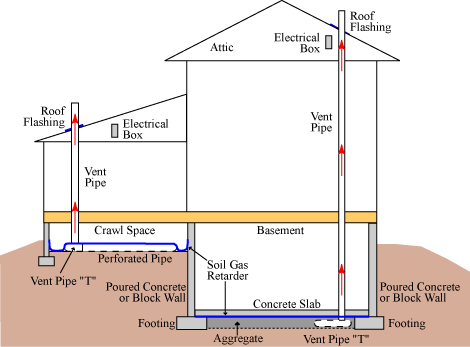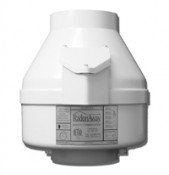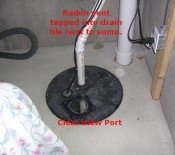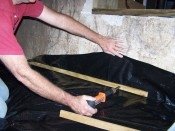- Home
- Radon Mitigation
- Radon Resistant New Construction
Radon Resistant
New Construction
Radon resistant new construction is an excellent way to protect your new home from elevated levels of radon gas. RRNC methods can reduce levels by about 30% without a radon fan. In the event that the levels are still elevated a radon fan is easily added with expected results usually below 1pCi/L.
Some contractors may complain about the expense, but really with a little cooperation among the subcontractors the price can be less than $1,000.00 to install. So here's how is it done...

Radon Resistant New Construction Guidelines
- Before the concrete floor is poured in the basement a permeable layer of gravel (1/4" or larger) needs to be used for the final grading. This will allow the radon to move below the house to a vent pipe. This can also be accomplished by using perforated drain pipe inside the interior of the footer and include a few runs across the middle, if the basement square footage is larger than 1500 sq ft.
- Next the radon pipe (3"or 4" PVC) is installed in a location that will allow the pipe to run through an interior wall to the roof. The efficiency of the system is greatest if the pipe can be run straight to the roof with no horizontal runs. A "T" fitting is glued on the bottom of the pipe and is inserted in the gravel. If drain tile is used the pipe is fasten to it.
- If a large section of the basement is crawlspace with exposed soil this area will need to be covered with a sturdy 6mil plastic that is sealed to the walls and a pipe inserted also. My experience is that with a small crawlspace or spaces these would only need to be covered and sealed. No pipe is needed.
- Before the concrete is poured a 6mil poly covers the soil or gravel. The poly is overlapped by 12". This not only helps contain the radon but also help keep ground moisture from migrating up into the concrete slab.
- After the floor is poured urethane caulk is used to seal all cracks and expansion joints.
- Where the pipe exits the roof it must at least 10 feet from any windows that can be opened. The radon pipe needs to be at least 12" above the plane of the roof.
- Finally, have the electrician place an outlet in the attic less than 6 feet from the radon pipe. If a fan is needed in the future you are all set to just plug it in.
Please remember this is a passive radon system. So when the construction is completed a radon test needs to be performed. But to fix a problem now is very straight forward and good results are easy to obtain. Also keep in mind that highest levels usually occur in the winter months, so you may want to do another test at that time as well. Learn how to test for radon gas...
If you would like some advice concerning radon resistant new construction for your particular situation please contact me, I'd be glad to help you out. Contact me here...







New! Comments
Have your say about what you just read! Leave me a comment in the box below.